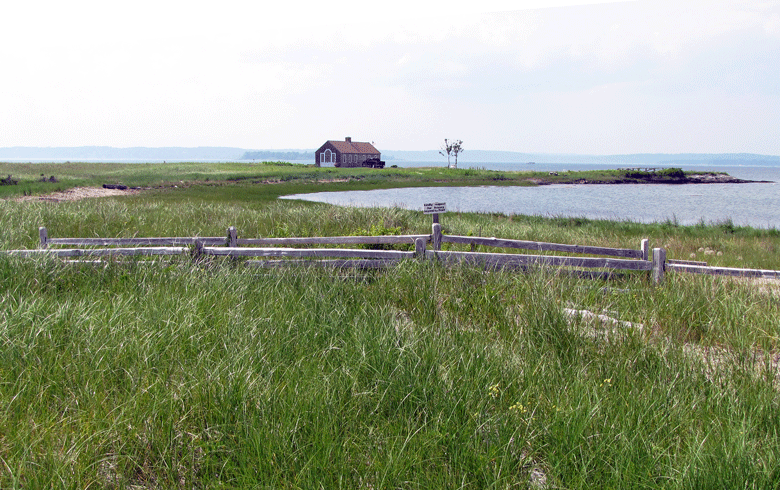The last time I set foot on Chebeague Island it was June 14, 2003. My enduring memory of the day is watching my brother speed across the bay aboard his best friend’s lobster boat, suited up and on his way to join his soon-to-be wife on the shore, where they would be married.
Since then, a lot has changed. My brother and his blushing bride now have two teenagers and the small community that was so hospitable to our family has had growing pains of its own.
Nineteen years ago Maine’s real estate market had yet to see the record price increases of the 2020s (up nearly 14 percent in 2020), essential broadband connectivity had yet to make working from home a possibility for most island and remote communities, and the COVID-19 pandemic had yet to inspire an exodus of families and professionals from outer climes to seek a new version of life—on the coast of Maine (30 percent of homes sold in Maine in 2020 were to buyers from out of state).
Folks showed up on their couches and at their kitchen tables, with preschoolers on their laps and dogs by their sides.
Like many Maine islands right now, Chebeague is facing a housing crisis. In December, the town select board asked the Island Institute to serve as neutral facilitators for a series of conversations that could help name the complexities of its housing challenges and identify the possibilities.
Together with a town select board member and two representatives from the newly organized ECHO (Enterprise for Chebeague Housing Options), we sketched out a conversation series designed to recreate the kind of free-flowing sharing of ideas and worries that might have been possible if we had all been gathered alongside coffee urns and doughnuts in the community center instead.
Participation in the video calls was encouraging, with roughly 50 community members on every call. Folks showed up on their couches and at their kitchen tables, with preschoolers on their laps and dogs by their sides.
They talked about the toll of having to move eight times in the span of two years to be able to stay housed, about how terrifying it is to know that the school is down to just nine students (from 33 in 2015), school families habitually citing housing as a primary reason for leaving.
They brought up the desperate need for younger residents, needed to staff essential businesses and essential services like fire and rescue, but who can’t afford to live on Chebeague.
Chebeague’s median age is 65. They talked about how this disparity leaves behind an island population of elderly who increasingly feel the need to move off-island prematurely because there is nowhere for them to comfortably live. And overwhelmingly, they brought up the heavy burden of fighting against the perceived inevitability of becoming a summer-only population.
In our last call together, they shared their visions of what it might look like if everyone on Chebeague were to have the housing that they need. There was talk of auxiliary units and elder housing and innovative design but also of a school full of children and lights on in houses all through the winter months.
A few video calls were never going to be enough to get from a place of concern to a place of concerted action. We all knew that. ECHO and Chebeague’s long established Chebeague Island Community Association are now working closely to move the work forward strategically.
The important leap made was simply getting started and doing so in a way that allowed all community members to participate as co-engineers of what will become the solutions they seek. As one islander put it: “We dream of people looking back at this process and seeing how this effort brought the community together.”
Thanks again for having us Chebeague. We’re here to support you. Here’s to the future you’ve imagined.





